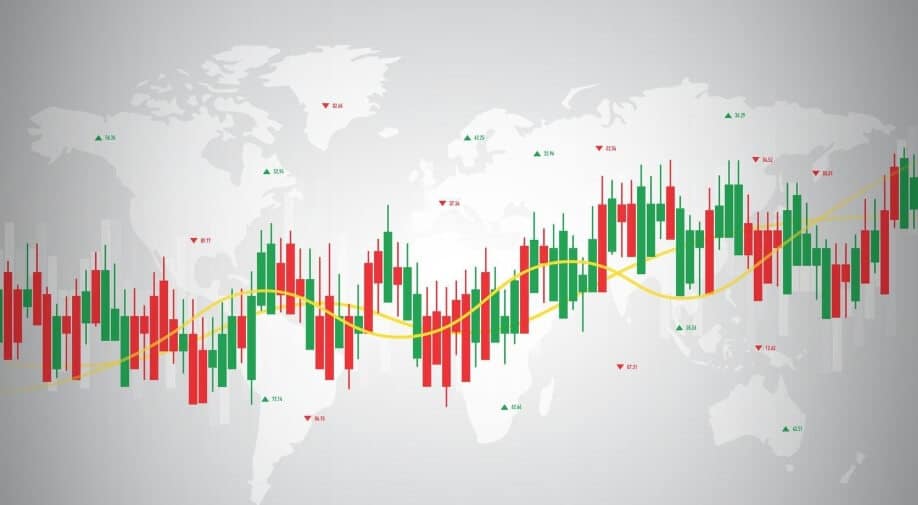
Diving into the depths of Forex trading, let’s illuminate the concept of a sell stop. In this guide, unravel the significance of sell stops, their role in managing risks, and how traders strategically employ them in navigating the dynamic currency markets.
In forex trading, a sell stop order is a type of order that becomes a market order once a specified price is reached. It is used by traders to sell a currency pair at a price lower than the current market price, with the aim of limiting losses or entering a short position. This order is commonly used when traders expect the market price to decline further and want to sell at a specific price level.
Key Takeaways:
- A sell stop order is a type of order in forex trading that becomes a market order when a specified price is reached.
- Traders use sell stop orders to sell a currency pair at a price lower than the current market price.
- Sell stop orders are used to limit losses or enter a short position in forex trading.
- These orders are essential for risk management and allow traders to protect against excessive losses.
- Sell stop orders are a valuable tool for managing positions effectively in the forex market.
What is a Sell Stop in Forex?
In forex trading, a sell stop order is a crucial tool that differs significantly from its counterpart, the limit order. Unlike limit orders, sell stop orders involve a stop price that, when reached, activates a market order.
Sell stop orders are an essential tool for risk management in forex trading, as they allow traders to protect against excessive losses and manage their positions effectively.
Key Features of Sell Stop Orders in Forex Trading
These features distinguish sell stop orders from other order types and play a pivotal role in executing trades under specific market conditions.
Specified Stop Price:
At the heart of a sell stop order lies the specified stop price. Unlike limit orders, which merely set a target selling price, sell stop orders introduce an additional layer of sophistication. Traders using sell stop orders pinpoint a specific stop price at which they want the market order to be triggered. For instance, imagine a trader holds a stock valued at £50 per share but is inclined to sell if the price drops to £45. This £45 becomes the specified stop price, activating the sell order once reached.
Market Order Trigger:
The distinctive feature of sell stop orders is their ability to transform into market orders. When the market price aligns with the pre-determined stop price, the sell stop order undergoes a seamless transition into a market order, triggering the immediate execution of the sell order. This real-time responsiveness allows traders to act swiftly in response to market movements, especially in volatile conditions.
Example: Consider a scenario where a currency pair is currently trading at £1.5500, and a trader wants to sell if the price drops to £1.5450. In this case, the £1.5450 acts as the stop price, and if the market price reaches or falls below this level, the sell stop order converts into a market order, executing the sell at the prevailing market price.
Slippage Considerations:
Unlike limit orders, sell stop orders may involve slippage. Slippage refers to the marginal discrepancy between the stop price and the actual market price at the time of execution. This discrepancy arises due to the dynamic nature of financial markets, where prices can fluctuate rapidly. Traders need to be cognizant of this potential slippage, as it can impact the execution price of the sell order.
Example: Suppose a trader sets a sell stop order with a stop price of £70 for a stock. However, due to rapid market fluctuations, the actual execution price may be slightly lower, say £69.75. This slight variance is the slippage, and it underscores the importance of factoring in market dynamics when employing sell stop orders.
Understanding these key features empowers traders to employ sell stop orders strategically, aligning their trades with specific market conditions and risk management objectives. Incorporating these features into trading strategies enables a more robust and effective approach to navigating the dynamic landscape of forex trading.
Buy-Stop and Sell-Stop Orders in Forex Trading
Understanding the nuances of buy-stop and sell-stop orders is essential for traders seeking strategic entry and exit points in the ever-shifting market landscape. These order types serve as valuable tools, enabling traders to capitalise on potential market movements, whether in the direction of a breakout or a reversal.
Buy-Stop Orders:
Buy-stop orders are a powerful instrument for traders anticipating an upside breakout in a currency pair. The mechanics involve placing a buy-stop order above the current market price. This order is activated only when the market price reaches or surpasses the specified higher price, allowing traders to enter a long position as the price continues its upward trajectory.
Example: Consider the scenario of the GBP/USD currency pair currently trading at £1.5000. A trader analyses the market and believes that if the price hits £1.5050, it will likely continue to rise. To capitalise on this potential upside breakout, the trader places a buy-stop order at £1.5050. When the market price touches or exceeds this level, the buy-stop order is triggered, initiating a long position for the trader.
Sell-Stop Orders: Initiating Short Positions for Downside Breakouts
Conversely, sell-stop orders are instrumental when traders anticipate a downside breakout in a currency pair. These orders are placed below the current market price, activating a sell order when the market price reaches or falls below the specified lower price. This allows traders to enter short positions, profiting from the anticipated downward movement.
Example: Suppose the EUR/JPY currency pair is currently trading at £130.00, and a trader anticipates a potential downside breakout if the price drops to £129.50. To capitalise on this expectation, the trader places a sell-stop order at £129.50. If the market price reaches or falls below this level, the sell-stop order is triggered, initiating a short position for the trader.
Trading Breakouts with Precision
Buy-stop and sell-stop orders are particularly advantageous when trading breakouts. Traders can strategically position these orders above or below key support or resistance levels, ensuring that they enter the market at optimal points. This approach allows for a proactive response to potential market shifts, enabling traders to capitalise on emerging trends.
Risk Management with Entry Stop Orders
Entry stop orders, including both buy-stop and sell-stop orders, play a crucial role in risk management. By defining entry points based on market conditions, traders can implement a disciplined approach to trading. These orders assist in avoiding impulsive decisions and ensure that trades are executed at predetermined levels, aligning with the trader’s analysis and strategy.
By strategically deploying these orders based on market analysis, traders can enhance their entry and exit points, contributing to a more nuanced and disciplined trading approach.
Stop Orders: Risk Management and Safeguarding Profits
Effective risk management is crucial in trading, and stop orders play a pivotal role in limiting losses. Whether entering a new position or safeguarding profits, stop orders offer traders a proactive approach to managing their portfolios.
Stop loss orders act as a safety net for traders, preventing additional losses if the market moves against their positions. For a long position, a stop loss order functions as a sell stop order, automatically selling the asset when the price hits the predetermined stop price. In a short position, it transforms into a buy stop order, executing a buy order to cover the short position when the market reaches the stop price.
Example: Imagine a trader enters a long position on the GBP/USD currency pair at £1.2500. To limit potential losses, they strategically set a stop loss order at £1.2450. If the market price drops to or below £1.2450, the sell stop order is triggered, closing the long position and mitigating further losses.
Moving Stop Loss to Protect Profits – Stop loss orders aren’t only about limiting losses; they can also be dynamic tools for protecting profits. In a profitable long position, traders may adjust the stop loss order from the initial stop price to a level that secures some of the gained profit. Similarly, for a short position in profit, the stop loss order can be shifted to safeguard the accrued gains.
Example: Suppose a trader enters a short position on the EUR/GBP currency pair at £0.9000. As the trade becomes profitable, the trader adjusts the stop loss order from the initial stop price to £0.8950 to protect the gained profit. This strategic move ensures that even if the market reverses, the trader secures a portion of the profits.
Persistent Effectiveness: Stop Loss Orders Until Liquidation or Cancellation – One notable aspect of stop loss orders is their persistence until the position is either liquidated or the trader cancels the order. This feature ensures that the risk management strategy remains in effect as long as the position is active, providing continuous protection against adverse market movements.
Example: A trader initiates a short position on the USD/JPY currency pair at ¥110.50 and sets a stop loss order at ¥111.00. This stop loss order remains in effect until the position is liquidated by reaching the stop price or the trader decides to cancel the order, offering an ongoing shield against potential losses.
Eliminating Continuous Monitoring – Stop loss orders offer traders peace of mind by eliminating the need for constant monitoring of market movements. Instead of anxiously watching the market, traders can set stop loss orders on their open positions, allowing them to focus on other aspects of life without the fear of substantial losses.
Example: A trader sets a stop loss order on a long position in the AUD/USD currency pair at $0.7200. This ensures that even if the trader is not actively monitoring the market, the stop loss order will automatically execute if the price falls to or below $0.7200, preventing significant losses.
Integrating stop orders into a comprehensive risk management strategy is essential for traders navigating the uncertainties of Forex trading. By utilising stop loss orders judiciously and adapting them to changing market conditions, traders can safeguard their capital, protect profits, and trade with greater confidence.
How to Use Sell Stop in Forex Trading
To effectively use sell stop orders in forex trading, it is important for traders to follow a systematic approach. The first step is to select a reliable forex broker that supports the use of sell stop orders. It is crucial to choose a broker that offers a user-friendly trading platform and provides access to a wide range of currency pairs.
Once a trader has opened an account with a forex broker, they can access the trading platform and begin placing sell stop orders. When placing a sell stop order, the trader needs to specify the currency pair they want to trade, the quantity they want to sell, and the price at which they want the sell stop order to be triggered.
It is important to set the stop price at a level that aligns with the trader’s risk management strategy. This involves considering factors such as current market conditions, support and resistance levels, and technical indicators. Setting a stop price too close to the current market price may result in premature triggering of the order, while setting it too far away may expose the trader to larger potential losses.
Once the market price reaches or goes below the specified price, the sell stop order is executed as a market order. It is important to note that sell stop orders do not guarantee a specific execution price, as the order is filled at the best available price in the market. By utilizing sell stop orders effectively, traders can protect against losses and manage their positions with greater precision.
Example of a Sell Stop Order
Let’s consider an example to illustrate the use of a sell stop order in forex trading. Suppose a trader holds a long position in the GBP/USD currency pair, and the current market price is 1.4000. The trader wants to limit their potential losses and decides to place a sell stop order at 1.3950.
| Order Type | Currency Pair | Quantity | Stop Price |
|---|---|---|---|
| Sell Stop | GBP/USD | 10,000 | 1.3950 |
In this scenario, if the market price reaches or goes below 1.3950, the sell stop order will be triggered, and the trader’s position will be sold at the best available price. This allows the trader to limit their potential losses and exit the trade if the market moves in an unfavorable direction.
Benefits of Using Sell Stop Orders in Forex Trading
Using sell stop orders in forex trading can provide traders with several benefits. Firstly, it enables traders to automate their trading strategy, allowing them to take advantage of market opportunities even when they are not actively monitoring the market. By setting a sell stop order, traders can specify a price level at which they want to sell a currency pair, ensuring that the order is executed if the market reaches or goes below that price. This automation helps traders avoid missing out on profitable trades or being caught in unfavorable market conditions.
Another significant benefit of sell stop orders is their role in implementing disciplined risk management. Traders can set predefined exit points for their trades by placing sell stop orders. This helps limit potential losses by enabling traders to automatically sell a currency pair at a specified price level if the market moves against their position. By having predetermined stop levels, traders can avoid emotional decision-making and ensure they stick to their risk management strategy.
Sell stop orders also offer flexibility in various trading scenarios. They can be used to enter the market during breakouts, allowing traders to participate in potential price reversals or trend changes. Additionally, sell stop orders can be used to protect profits by moving the stop price in the profitable direction. This strategy, known as trailing stops, allows traders to secure profits while still allowing the possibility of further gains if the market continues to move in their favor.
It is important to distinguish between sell stop orders and sell limit orders. While sell stop orders are triggered when the market price goes below a specified price, sell limit orders are triggered when the market price reaches or goes above a specified price. Traders should carefully evaluate market conditions and their trading objectives to determine the most appropriate order type for their strategy. By understanding the differences between these order types and utilizing sell stop orders effectively, traders can enhance their risk management and potentially optimize their trading outcomes.
FAQ
What is a sell stop order in forex trading?
A sell stop order is a type of order that becomes a market order once a specified price is reached. It is used by traders to sell a currency pair at a price lower than the current market price.
Why do traders use sell stop orders?
Traders use sell stop orders to limit losses or enter a short position. It allows them to sell at a specific price level, especially when they expect the market price to decline further.
How do I use a sell stop order in forex trading?
To use a sell stop order, you need to select a reliable forex broker that supports such orders. Once you have an account, access the trading platform, specify the currency pair, quantity, and the price at which you want the sell stop order to be triggered. When the market reaches or goes below the specified price, the sell stop order will be executed as a market order.
What are the benefits of using sell stop orders in forex trading?
Using sell stop orders allows traders to automate their trading strategy, implement disciplined risk management, and take advantage of market opportunities even when they are not actively monitoring the market. Sell stop orders also help in entering the market during breakouts or protecting profits by moving the stop price in the profitable direction.
What is the difference between sell stop and sell limit orders?
Sell stop orders are triggered when the market price goes below a specified price, while sell limit orders are triggered when the market price reaches or goes above a specified price. Traders need to carefully evaluate market conditions and their trading objectives to determine the most appropriate order type for their strategy.

















